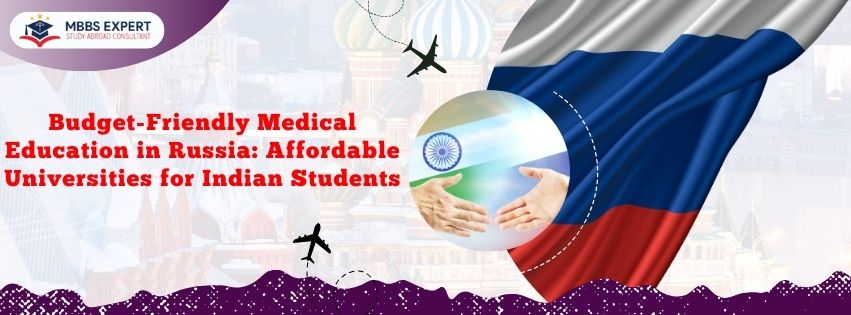Best and Affordable Medical Universities Abroad for Indian Students Pursuing an MBBS degree abroad has…

Which Country is Best for MBBS Abroad in 2025 as per FMGL Rules?
![]()
 , competitive exams, and high tuition fees in India. The demand for international MBBS programs is rising, especially in countries that offer high-quality education with affordable costs. However, with the introduction of the Foreign Medical Graduates Licensing (FMGL) Rules, students and parents need to be more cautious and informed about their choices. Let’s explore the top destinations for MBBS abroad in 2025—Russia, Georgia, Nepal, and Uzbekistan—while analyzing how well each country aligns with FMGL regulations.
, competitive exams, and high tuition fees in India. The demand for international MBBS programs is rising, especially in countries that offer high-quality education with affordable costs. However, with the introduction of the Foreign Medical Graduates Licensing (FMGL) Rules, students and parents need to be more cautious and informed about their choices. Let’s explore the top destinations for MBBS abroad in 2025—Russia, Georgia, Nepal, and Uzbekistan—while analyzing how well each country aligns with FMGL regulations.
Understanding FMGL Rules and Their Impact on Studying MBBS Abroad
The FMGL Rules, introduced by the National Medical Commission (NMC) in India, outline the requirements that an MBBS degree earned abroad must meet for students to be eligible to practice medicine in India. Some of the key aspects include:
- Course Duration: The total MBBS course duration must be a minimum of 54 months, followed by a mandatory 12-month internship.
- Language of Instruction: The medium of instruction must be in English or bilingual if needed.
- Quality of Curriculum: The curriculum must meet standards comparable to Indian medical education.
- Eligibility to Practice Locally: The foreign university should be recognized, and the student must be eligible to practice medicine in the country where they studied.
Ensuring these criteria are met can help students avoid unnecessary obstacles when they return to India to pursue their medical careers.
MBBS in Russia
1. Quality of Education and Curriculum
Russia has long been a favored destination for Indian students, with several Russian medical universities being recognized by the World Health Organization (WHO) and the National Medical Commission (NMC). Russian medical universities like Kazan Federal University, Chuvash State University, and others maintain high standards with modern infrastructure, state-of-the-art labs, and skilled faculty.
Pros:
- Recognized Institutions: Many Russian universities are globally recognized, making their degrees more acceptable in India and other countries.
- FMGL Compliance: Universities in Russia offer programs meeting FMGL requirements, including a 5.8-year curriculum with a year-long internship.
- Affordable Tuition Fees: Tuition fees in Russian medical universities range from $3,500 to $6,500 per year, making it accessible for many middle-income families.
Cons:
- Language Barriers: Although the primary medium of instruction is English, daily communication and clinical practice may involve Russian, which can be challenging.
- Climate Adjustments: Russia’s cold climate can be tough for Indian students, especially those from warmer regions.
Conclusion: Russia remains one of the top choices for MBBS abroad in 2025 due to its established institutions, affordable fees, and adherence to FMGL standards. However, students should be prepared for language barriers and climate conditions.
MBBS in Georgia
2. Academic Standards and Practical Exposure
Georgia has gained popularity recently for MBBS programs due to its high-quality education system, affordable costs, and attractive cultural experience. Institutions like Tbilisi State Medical University and BAU University in Batumi are known for their rigorous curricula and clinical exposure.
Pros:
- European-Style Education: Georgia follows a European approach to medical education, focusing on practical skills and up-to-date medical knowledge.
- FMGL Compliance: Georgian MBBS programs are generally six years, fulfilling FMGL requirements, including extensive clinical rotations in the final year.
- Cost-Effectiveness: The average tuition fee is between $4,000 and $7,000 per year, with a low cost of living.
Cons:
- Post-Graduation Licensing Complexity: While the Georgian degree is recognized by the NMC, students sometimes face challenges securing internships and licensure in India.
- Limited Hospital Affiliations: Georgian universities are relatively new in medical education, leading to limited affiliations with top hospitals for internships.
Conclusion: Georgia presents a solid choice for Indian students, especially those who want exposure to a European education system at an affordable rate. The country’s curriculum generally aligns with FMGL standards, although students should be prepared to navigate internship and licensing challenges upon returning to India.
MBBS in Nepal
3. Proximity and Cultural Similarities
Nepal has been a popular destination for Indian students for MBBS due to its proximity, cultural similarities, and English-medium education. With medical colleges like Kathmandu Medical College and B.P. Koirala Institute of Health Sciences, Nepal has established itself as a reliable choice for quality medical education.
Pros:
- FMGL Compliance: Nepal’s medical colleges follow a five-and-a-half-year curriculum, meeting FMGL requirements. Clinical rotations are incorporated within the curriculum, ensuring students gain hands-on experience.
- Cultural and Linguistic Affinity: Due to its cultural proximity, Indian students adapt easily to Nepal. Most courses are taught in English, with faculty and students fluent in Hindi as well.
- Easy Travel: Being a neighboring country, students can travel back to India without a visa, making it convenient and affordable to visit home during breaks.
Cons:
- Higher Cost Compared to Other Countries: While tuition fees vary, some private institutions in Nepal charge as much as $8,000-$10,000 per year, which can be more expensive than options in Russia or Uzbekistan.
- Limited Seats for International Students: Seats for international students are limited, making admissions competitive.
Conclusion: Nepal remains a popular option for Indian students due to its accessibility, language compatibility, and compliance with FMGL standards. The higher cost and limited seat availability, however, are factors to consider when planning.
MBBS in Uzbekistan
4. Emerging Popularity and Affordability
Uzbekistan has recently emerged as a popular destination for Indian students due to low tuition fees, a moderate climate, and efforts by the Uzbek government to attract international students. Universities like Tashkent Medical Academy and Samarkand State Medical Institute offer globally recognized MBBS programs.
Pros:
- Affordable Fees: Tuition fees in Uzbekistan are quite affordable, generally ranging from $2,500 to $4,000 per year. The cost of living is also lower, making it an economical option for many students.
- FMGL Compliance: MBBS programs in Uzbekistan have been updated to align with FMGL regulations, including a six-year curriculum with clinical rotations.
- English-Medium Programs: Most universities provide English-medium MBBS programs, making it easier for Indian students to follow the curriculum.
Cons:
- Developing Infrastructure: While Uzbekistan is improving its medical education infrastructure, it may not yet be on par with the facilities in Russia or Georgia.
- Language Challenges: While classes are conducted in English, local language proficiency might be required for practical training in clinics and hospitals.
Conclusion: Uzbekistan offers a compelling choice for students seeking an affordable and FMGL-compliant MBBS program. However, students should assess the quality of infrastructure and be prepared for potential language barriers.
Comparative Overview of MBBS in Russia, Georgia, Nepal, and Uzbekistan
| Factor | Russia | Georgia | Nepal | Uzbekistan |
|---|---|---|---|---|
| Cost | Moderate | Moderate | Higher | Low |
| FMGL Compliance | Yes | Yes | Yes | Yes |
| Medium of Instruction | English/Russian | English | English/Hindi | English |
| Climate | Cold | Moderate | Moderate | Moderate |
| Clinical Exposure | High | Moderate | High | Moderate |
| Cultural Adaptability | Moderate | Moderate | High | Moderate |
Final Thoughts: Choosing the Right Country for MBBS Abroad in 2025
When choosing a country for MBBS abroad in 2025, students should not only focus on academic standards and FMGL compliance but also consider factors like cultural adaptability, costs, and post-graduation licensing pathways. Here’s a quick guide for different preferences:
- For Affordable Education: Uzbekistan and Russia offer lower tuition fees and living costs, making them ideal for budget-conscious students.
- For Ease of Cultural Adaptation: Nepal is the best choice for students who prefer a familiar cultural environment and language.
- For European-Style Education: Georgia offers a European academic experience, ideal for those seeking diverse medical education with international exposure.
Conclusion: FMGL Compliance and Personal Priorities Matter Most
Each of these countries—Russia, Georgia, Nepal, and Uzbekistan—presents unique advantages and aligns well with FMGL requirements, making them top choices for Indian students aiming to pursue MBBS abroad in 2025. By carefully evaluating the pros and cons of each destination, students can make an informed decision based on their individual needs, preferences, and career goals.





